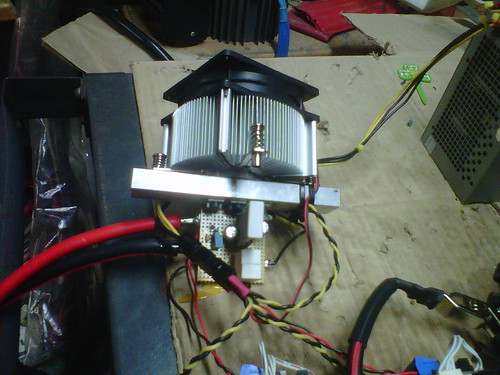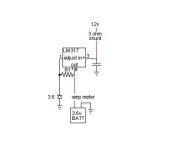rkosiorek
100 kW

Single Cell LiFePO4 charger by rick_kosiorek, on Flickr
I have a few large LiFePO4 packs that have been stored for a few years without being charged. some cells are 3.3V and over. these are likely good. some cells have leaked and are obviously bad. Others read near 0V and likely cannot be recovered. a Few are over 1V but less than 2.0V so off the shelf chargers will not even start charging them. So i decided to put together a CC/CV power supply i can use to try to bring these back to life.
I have a collection of wall type power adapters from various DVD players, dead WiFi Routers etc. that i decided to re-purpose a couple of them rated 12V @ 2.0A.
The output of the Wall adapter is fed into a 2 stage regulator. each stage has an LM338T rated for 5A. the first one is set up as a current limiter that can be switched for 100mA, 1.0A or 1.8A. this is controlled by a pair of toggle switches. both switched off the output is 100mA. either switch on adds a resistor in parallel to R3 and sets the limit to 1.0A. Throwing the other switch on as well bumps the current up to 1.8A
I figured that it would be much safer to use a low current at first for the cells under 2.0V than to try and charge them at higher currents. for flexibility i also wanted higher currents to be available.
The current limiter feeds a second LM338T used as a voltage regulator. Output voltage can be set by R9. i used a 25 turn trimmer because the adjustment can be a bit finicky. a 4A rectifier is used as a blocking diode on the output. if i forget to disconnect the charger it will not drain the battery.
Last i wanted a voltmeter to show what was happening. the only ones i had on hand need an isolated supply. the top half of the circuit using the LM7805 and DC-DC block converter is the supply for the LED Voltmeter and can be deleted if a meter is not included.
Rick












